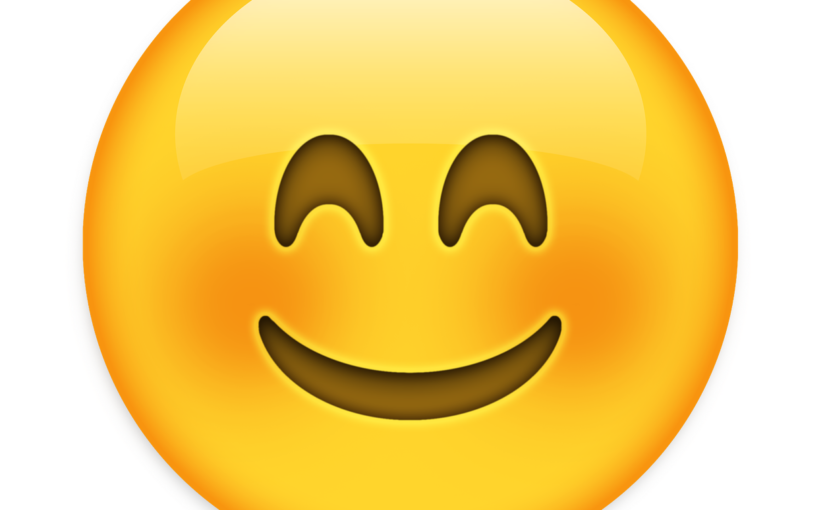Ahhh… those famous little digital caricatures we’ve only had for two decades, but now can’t seem to live without. A cursory look for “emoji” on Wikipedia will tell you that emojis (yes… the plural is accepted with the “s”) are of Japanese origin, and their widespread use in cell phones is barely a decade old.
There is a lot more useful information in Wikipedia, but it is outside of the scope of this article. Some call them “emoticons”, but for purposes of this article we will stick with “emojis.”
So… emojis have actually become a little language of their own, to the point where some, mostly the younger generations, can hold entire (texted) conversations using barely anything other than emojis. They are a huge cornerstone of social media. Like many things that become a “wave” of modernization, emojis have taken on a life of their own. “The Emoji Movie” (2017) is pretty much proof of that.
I confess to using them myself, particularly in Whatsapp conversations with family and friends. Hey, why not? They’re fun… and can sometimes add a funny and desired special effect to a sentence. I also use them in a boxing forum to which I belong.
But let’s be real. Emoji overuse, or using them in certain situations, can be a bit annoying and counterproductive. Google search “emojis” and you’ll find plenty of articles portraying them in a negative sense. Regardless… I still feel they can be fun in the right setting. But… are all emojis “created equal”?
Everyone knows the more popular emojis: the smilies, winks, hearts, the “rolling eyes,” etc. One of my personal favorites is the face palm. In the correct situation, this emoji is hilarious. Nothing says “that was a dumb question (or statement)” better than a face palm. On the other hand, one of the most overused emojis in existence is the “thumbs up.”
The “thumbs up” is extremely useful in real life. If you’re a scuba diver, or a construction worker, it’s a critically essential part of the unspoken language. Even in emoji form, if used correctly it’s a useful time saver when used under the right circumstances.
However, it can also be grossly overused and perceived as rude, obnoxious, and just plain wanting to seem “cool”, “detached”, and/or just too busy to be bothered with a real response. Unfortunately, the thumbs up sometimes leaves unclear exactly what the answer is supposed to be, to a question or comment. This is particularly frustrating when you’ve written a text which requires a worded response, and all you get is a thumbs up. Does that mean ok? That you got the message? That you agree? That you’re not interested in the conversation? It’s a catch-all, easy to use and therefore easy to OVERuse. It can also be perceived (and maybe meant) as a conversation-ender.
To be fair, not all emoji users, including the “thumbs-up”, intend to either be rude or annoying. Maybe to them it’s just a time-saver. However, as the old saying goes: “Perception is nine-tenths of reality.”
In any case, I will share this blog article on my Facebook page as I always do. In all likelihood I’ll be getting a few thumbs-up in response… LOL (By the way, “initialisms” such as LOL are all the rage also. But discussing these would require a separate article).
So therefore I’ll beat everyone to it, and post my own favorite version of the thumbs-up, which just happens to be a GIF.


🧐 As everything in life it’s all about balance. Emoji’s are great because it can show emotion and also is a universal language. But it can not be used as a substitute of actual words. People who try to speak emoji must travel back in time and become Egyptians hahaha. 😉
Right you are, Dani. It’s all about balance. I would also add common sense, to go along with that balance. There’s a time and a place… like the old saying goes. Thank you for your comments.
🤣🤣🤣🤣🤣loved your thumbs up!! Too funny!!! Loved the article!
Sometimes emojis make me take longer to send messages looking for THE right one.
To me the worst emoji you can receive is the birthday ones. Instead of a card or a call you get these🍰 🎁 🎉 …and this is how I feel about those🙄
That is a good point, and thanks for contributing to the blog. That is a good example of people substituting the quick and easy (and sometimes meaningless) emoji for an actual, thought-out message that might take a few more seconds of their time. Great point! It’s all about balance, like a previous commenter said. Emojis are fun and useful at times… but their overuse or overdependence on them can be quite annoying to the rest of us. Thank you for your comments, Lissie.